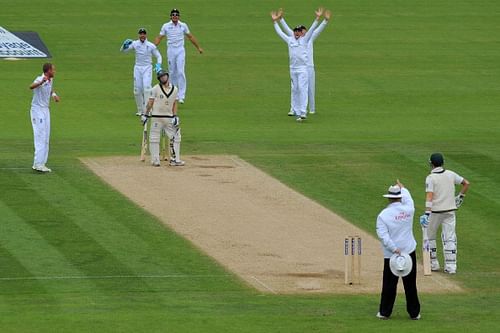
DRS: Blame the officials, not the system

The DRS saga refuses to die down as Chris Rogers’s name was added to the list of DRS-related controversies in the Ashes
The ongoing Ashes series, although far from complete, may have lacked the excitement of previous editions, but there has been no shortage of talking points.
The fall of Australian cricket, the controversies the team has faced in the form of certain ‘cancerous’ players, England’s predicted rise to the summit of Test rankings, the James Anderson renaissance, among other things, have been discussed and dissected to no end by cricket fans and ‘experts’ alike.
However, this series will be remembered for something entirely different – the failure of the Decision Review System (DRS).
The anti-DRS brigade must have been rubbing their hands in glee after Chris Rogers, batting on 16, was saved on the 2nd day of the ongoing 4th Ashes Test in Durham, as the faults and chinks of DRS were brought to the forefront once again. Originally given out for a caught behind decision, Rogers asked for a review as he was sure the ball had not hit his bat.
And he was right. The ball did not hit his bat, but was going on to hit the top of off-stump as was evident by the Hawk Eye replays. It was a clear LBW decision that should have resulted in the batsman walking back to the pavilion. But due to some bizarre decision-making which ensued in much controversy, the 35-year-old was given a second chance, and he made full use of it as he scored an unbeaten 101 to give Australia a real chance of winning the Test. And once again, it was the system that was blamed.
DRS has been no stranger to controversies ever since its first testing in 2008, and its subsequent launch in 2009. The BCCI has been one of the biggest critics of this system ever since its inception, especially after that infamous Ian Bell LBW decision. It is not reliable, they said. It should either be perfect or should be disbanded completely, they added.
Thanks to the clout they enjoy, the BCCI ensured that no match played in India (barring ICC tournaments) would make use of DRS until it was completely fool-proof.
And now, the rest of the world is slowly but surely starting to agree. Almost every Test of the Ashes so far has had at least one instance that proved that the system was far from perfect. Whether it was the decision that gave Rogers a reprieve or the dismissal of Kevin Pietersen in the third Test, where Hot Spot did not show up, DRS has been in the news for the wrong reasons all throughout the series.
Admittedly, the system isn’t perfect. Improvements need to be made, and they need to be made quickly. But is discontinuing the use of DRS really such a good idea? I don’t think so.
While everyone has been ranting about how ineffective the system is, the number of times it has overturned incorrect decisions has been swept under the carpet. Umpires, as skilled and experienced as they may be, are human beings at the end of the day. They are prone to making errors, rather shocking ones at times.
Without DRS, a decision that is clearly wrong would be the final call and the batsman or bowler who has been wronged will not have any way of correcting it. And it is for this exact scenario that the system proves its value – to ensure that shocking decisions do not affect the result of a match.
Moreover, there has been no clarity regarding the use of DRS. I don’t think even the umpires understand the system completely. Is that the system’s fault or the umpires’?